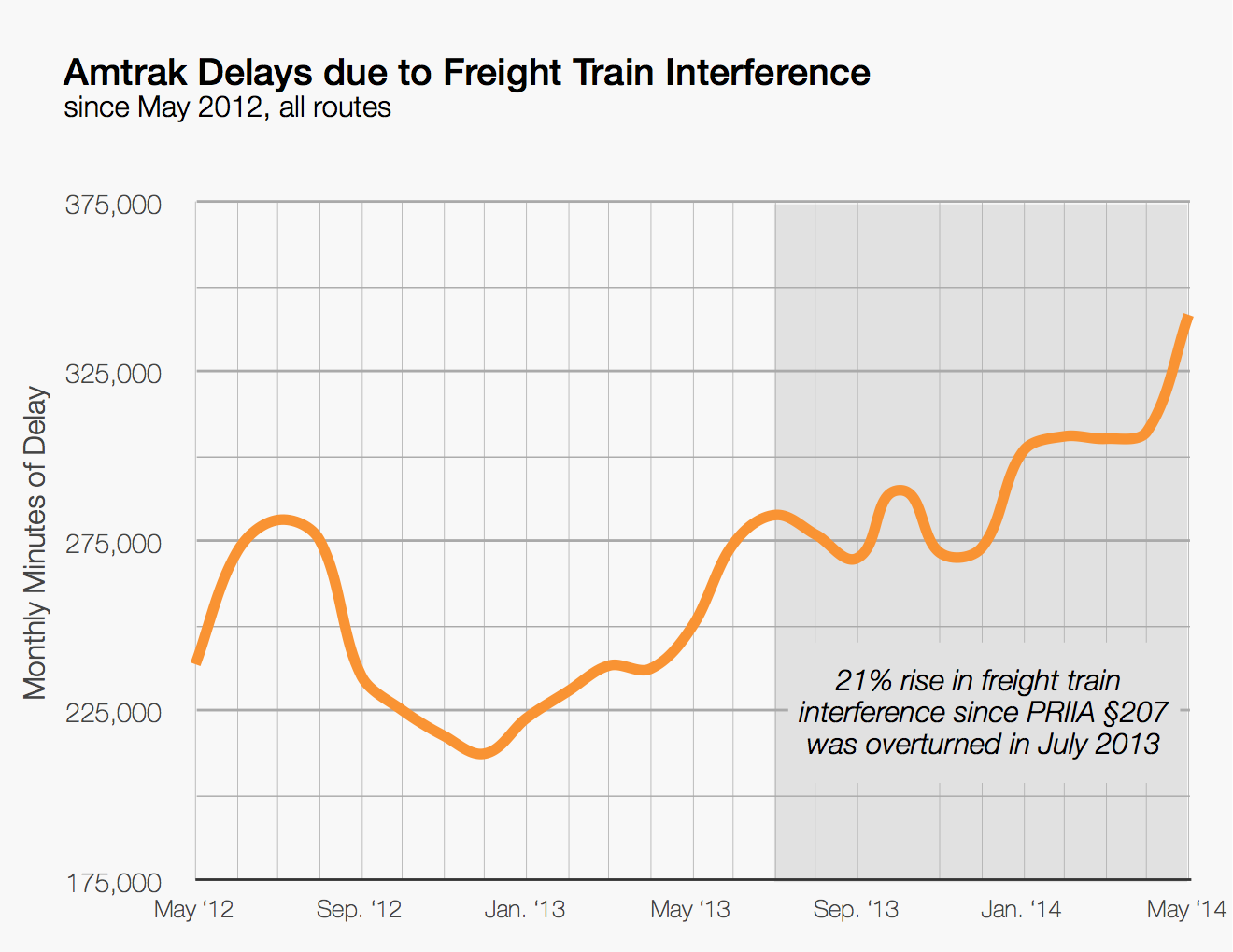Table of Contents
Download Planning for a New Northeast Corridor:

Download The Hudson Terminal Plan:

Download the Trends & Opportunities Report:

The Passenger Rail Investment and Improvement Act of 2008
In 2008, Congress passed the Passenger Rail Investment and Improvement Act (“PRIIA”), which sought to improve Amtrak’s intercity rail operations and financial viability by, among other methods, creating route performance improvement plans, restructuring long-term debt and capital leases, designating metrics and standards for success, and reauthorizing federal subsidy appropriations for operations and capital expenses through 2013. In order to ensure that Amtrak was able to improve on-time performance, Sections 207 and 213 of PRIIA afforded Amtrak preferred access over the various freight railroad’s private trackage (which Amtrak shares for almost all of its intercity routes). Section 213 authorized the Surface Transportation Board to fine the freight railroads if delays were “attributable to a rail carrier’s failure to provide preference to Amtrak over freight transportation....”
These provisions of PRIIA would have helped Amtrak to supplement its lack of dedicated trackage throughout the United States and ease congestion along its routes by guaranteeing certain levels of service over the various freight railroads. However, in July of 2013, the United States Court of Appeals for the D.C. Circuit ruled that these provisions of PRIAA constituted “an unlawful delegation of regulatory power to a private entity.” Unlike the 1995 Supreme Court case Lebron v. National R.R. Passenger Corp, which designated Amtrak a government entity for the purposes of individual rights, in this case, the D.C. Circuit ruled that Amtrak was a “private corporation with respect to Congress’s power to delegate regulatory authority.”
One of the most successful provisions of PRIIA is Section 209, which calls for states to share the costs of Amtrak routes less than 750 miles long. Under Section 209, Amtrak would continue providing intercity passenger rail operations, but the states must pay the operating costs and capital expenses associated with their proportionate use of a given route. In October of 2013, Amtrak reached agreements with 19 states to cover the operating subsidies of 28 interstate passenger trains (with the exception of the Northeast Corridor) running on routes less than 750 miles long. Section 209 encourages states to reexamine the costs associated with intercity passenger rail now that they have to cover the operating losses of unprofitable routes. In other instances, by taking control of the funding of these routes, some single-state routes have received additional capital investments in order to increase operational efficiency.
Finally, PRIIA reaffirmed Congress’s “need to maintain Amtrak as a national passenger rail system,” specifically with regards to continuing operations of Amtrak’s fifteen long-distance trains. Under Section 228, Congress found that “Amtrak’s long-distance trains provide an essential transportation service for many communities and to a significant percentage of the general public.” Further, “[m]any long-distance trains serve small communities with limited or no significant air or bus service, especially in remote or isolated areas in the United States.” Thus, Congress concluded that “Amtrak should maintain a national passenger rail system, including long-distance routes, that connects the continental United States from coast to coast and from border to border.” While PRIIA appropriated funds for the planning of high- speed, long-distance rail corridors, it did not appropriate funds towards the actual creation of these routes.
Next: The Economic Landscape of the Northeast Corridor Region...

